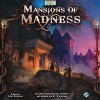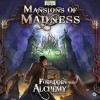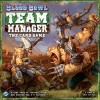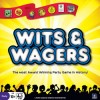
macruby
gamer level 3
939 xp
939 xp
followers
6
6
Use my invite URL to register (this will give me kudos)
https://boardgaming.com/register/?invited_by=macruby
profile badges
...
...
...
...
recent achievements

Novice Grader
Grade 20 more reviews or tips by clicking "Yes" or "No" in response to the question "Was this helpful?"
Grade 20 more reviews or tips by clicking "Yes" or "No" in response to the question "Was this helpful?"

I Got What I Wanted
Add a game to your Owned list that was previously in your Wish list.
Add a game to your Owned list that was previously in your Wish list.

I'm a Real Player!
Claim that you have played a game today by clicking the "Played Today!" button on a game page 25 times.
Claim that you have played a game today by clicking the "Played Today!" button on a game page 25 times.

Gamer - Level 3
Earn Gamer XP to level up!
Earn Gamer XP to level up!


























Mansions of Madness (1st ed)
Mansions of Madness is an intimidating game to unbox and to set up. There are a million chits, plenty of obscure, conditional rules, and a confusing array of choices that the Keeper (aka dungeon master) must make before play begins.
But the game is also awesome.
When we first started setting it up for our “learn the rules as we play” sessions last weekend, I was pretty overwhelmed. I was the Keeper, I bought the game, but suddenly was getting dizzy with set up. The various decks aren’t labeled very well, and I continuously had to refer back to the contents pages of the rule book to see what I had to grab next. Thankfully, my veteran Arkham Horror friend, @Jason P, was there to walk me through the confusing parts of the setup process.
Once everyone chose their characters, and I made the various story choices for the first mission, everything settled down. Fantasy Flight’s mechanics work extremely well, taking a lot of the events out of the hands of the keeper and placing them in the various decks of cards used in the game. Unlike HeroQuest or something, where the keeper is guiding characters through a story, Mansions has the keeper actively playing along as well. He doesn’t hold THAT many secrets, or know of very many traps. They all come out in the cards, and the events that play out as time progresses (it’s especially fun if you didn’t read the event cards ahead of time).
The investigator characters are propelled forward by the story and the clock. It’s a much more linear game than Arkham, requiring everyone to keep moving, and keep discussing the clues they discover, in order to win before the game destroys itself. Everyone spends the first act wandering around the mansion, armed mainly with the various clues tucked into the story read at the beginning of the game. As turns progress, time markers are placed on event cards, and usually after 3-4 turns, the next card is flipped and a new “chapter,” of sorts, begins. Eventually you discover your game-winning objective (along with the keeper’s objective) and it’s a race to get it done.
Combat is a big part of the game, as investigators are fighting off various monsters controlled and summoned by the keeper. I loved that the combat is driven by a deck of cards, with flavor text and conditions on how each fight plays out. If you’re using a shotgun, for example, you keep drawing cards until you find one with “Ranged weapon” on it. You read what it says, you roll for whatever skill check it asks, and then you read the pass or fail text. It’s a lot of fun. There’s also a good bit of strategy involved in regards to the weapons you use, and also the attack order (each round, the investigators decide who goes first).
Another important aspect of the game are the puzzles. Similar to the videogame Bioshock, in order to search some rooms or open specific doors, players have to complete a simple tile puzzle. Everyone we were playing with really enjoying figuring out the puzzles, which involve spinning and swapping tiles to match symbols or to connect colored lines. They are a good side-project in the game, and can encourage teamwork (but not cheating) as various players use the “action” phase of their turn to take a crack at completing the thing.
Okay, so this game is probably too big to review like this, and with only one play sessions under my belt I’m sure there will be more to say later. As far as playtime went, setup took unusually long: over an hour. This was mainly because of all the learning involved with the various decks, chits, and occasional vague rule (like how to position item cards in rooms). The game itself took close to three hours, which was shorter than expected.
Overall, everyone seemed to really enjoy the game and we look forward to more sessions. It was a very detailed, realistic game with lots of rules and conditions to sort through. It’s also very satisfying from a theme perspective, and even though I (the keeper) won, it never felt unbalanced.